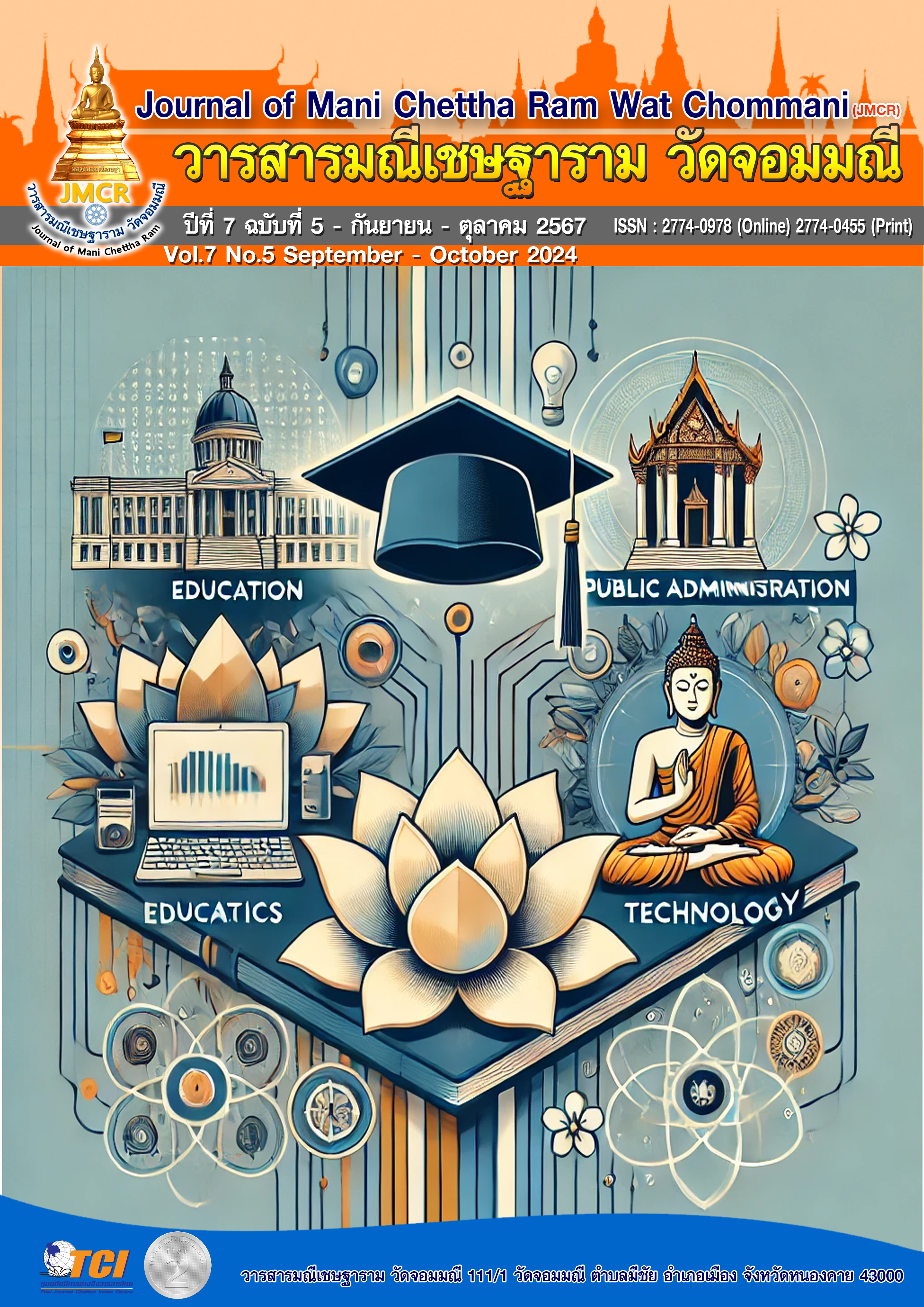BUDDHIST INNOVATION AND CROSS-DISCIPLINARY RESEARCH
Keywords:
Buddhism, Innovation, Cross-Disciplinary ResearchAbstract
The purpose of this academic article is to study the Buddhist Innovation and Transdisciplinary Research" has content that is consistent with the discoveries and developments in science and technology that have been applied in the field of Buddhism. This cross-disciplinary research aims to bridge the gap between scientific and religious knowledge to provide a deeper understanding of Buddhism and related cultures. The application of cross-disciplinary research in the field of Buddhism is very diverse. It focuses on combining knowledge from various sciences with philosophy and Buddhism. To better understand and apply it in practice to life and society. For example, applying psychological theory to the Buddha's teaching of Vipassana. or the study of economic philosophy to find ways to solve social problems in terms of fairness and equality. Applied scientific research in Buddhism includes studies such as studies of meditation experiences and their effects on a person's mental health. or using communication theory to support the spread of Buddhist philosophy in society. Buddhist Innovation and Transdisciplinary Research” focuses on the integration of Buddhism and scientific research to enhance understanding of the various aspects of these two religions. This article focuses on finding new knowledge that has the potential to promote the value and benefits of Buddhism in various ways and providing scientific information related to Buddhism in order to gain a deeper understanding and value in Applied in the daily life of humanity.
References
กีรติ ยศยิ่งยง. (2552). องค์กรแห่งนวัตกรรม แนวคิดและกระบวนการ. กรุงเทพมหานคร: สำนักพิมพ์แห่งจุฬาลงกรณ์มหาวิทยาลัย.
งานส่งเสริมนวัตกรรมสู่เชิงพาณิชย์ ฝ่ายบริการพัฒนาธุรกิจเทคโนโลยี. "นวัตกรรมไทย". เรียกใช้เมื่อ 16 กรกฎาคม 2567. จาก http://www.innovation.go.th/thai-innovation-register.
ณรงค์ โพธิ์พฤกษานันท์. (2556). ระเบียบวิธีวิจัย หลักการและแนวคิด เทคนิคการเขียน. ในรายงานการวิจัย. พิมพ์ครั้งที่ 8. กรุงเทพมหานคร: บริษัท เอ็กซเปอร์เน็ท จำกัด.
พระธรรมปิฏก (ป.อ.ปยุตฺโต). (2541). มองอเมริกามาแก้ปัญหาไทย. กรุงเทพมหานคร: มูลนิธิพุทธธรรม.
พีรพงษ์ กลิ่นละออ. (2558). รูปแบบนวัตกรรมการสื่อสารแนวพุทธ เพื่อการพัฒนาเกษตรกรสู่เศรษฐกิจพอเพียง. วารสารบริหารธุรกิจ เศรษฐศาสตร์และการสื่อสาร, 10(2).
มหาจุฬาลงกรณราชวิทยาลัย. (2539). พระไตรปิฎกภาษาไทยฉบับมหาจุฬาลงกรณราชวิทยาลัย. กรุงเทพมหานคร : โรงพิมพ์มหาจุฬาลงกรณ์ราชวิทยาลัย.
วุฒินันท์ กันทะเตียน. (2560). ภูมิสถาปัตยกรรมของวัดไทยกับการเรียนรู้และการเสริมสร้างสุขภาวะเชิงพุทธบูรณาการ. กรุงเทพมหานคร: สำนักงานกองทุนสนับสนุนการสร้างเสริมสุขภาพ (สสส.)
สำนักงานคณะกรรมการวิจัยแห่งชาติ. (2561). คู่มือมาตรฐานการเผยแผ่ผลงานวิจัยและผลงานทางวิชาการ. พิมพ์ครั้ง 5. กรุงเทพมหานคร: โรงพิมพ์แห่งจุฬาลงกรณราชวิทยาลัย.
Frodeman, R., Klein, J. T., & Mitcham, C. (2010). The Oxford Handbook of Interdisciplinarity. Oxford University Press.
Hughes, T. (1987). The Evolution of Large Technological System. In W. Bijker (Ed.), The Social Construction of Technological Systems: New Directions in the Sociology and History of Technology. Cambridge, UK: Cambridge University Press.
Kabat-Zinn, J. (2003). Mindfulness-Based Interventions in Context: Past, Present, and Future. Clinical Psychology: Science and Practice.
Kabat-Zinn, J. (1990). Full Catastrophe Living: Using the Wisdom of Your Body and Mind to Face Stress, Pain, and Illness. Delacorte.



